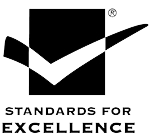Dynamically Different: The Owens Yacht Company
Founded in 1925 by Charles Councilman Owens, the Owens Yacht Company (originally the Owens Boat Company) is remembered for their sleek and award-winning designs, as well as their innovation and entrepreneurship that contributed to advances in maritime technologies. The Owens Yacht Company grew and flourished through the efforts and cooperation of the children of Charles Owens; including Molly, Charles Junior (also known as “Chuck”), Norman, Jack, and Billy Owens. The company was eventually sold to the Brunswick Corporation in 1965, where the Owens name would disappear.
This exhibit will highlight the distinguished history of the company, the boats that were created, and a few of the notable employees that contributed to the success of the Owens Yacht Company. The creation of this exhibit would not have been possible without the diligent oral histories collected by Mike Miron, an enthusiast of Annapolis history and the Owens’ family.
Born in 1877 in Owensville, outside of Annapolis, Charles Owens would eventually become the Sales Manager for the Westinghouse Corporation. In this position, he would associate with the likes of Henry Ford, and he would begin to find inspiration for a boating company in the assembly lines and production processes he was surrounded by.
Mary Glynn Owens would pass away from influenza in the early 1920’s, leaving Charles Owens with the task of raising their five children on his own. Charles Owens was greatly affected by the loss of his wife. It was a forbidden love story, as he was expected to marry someone from an established Anne Arundel County family, but instead married Mary Glynn, who was from an Irish family from Brooklyn. Charles and Mary were wed in 1909.
Mary Glynn’s death was the catalyst in Charles’ decision to leave Detroit and to take his children back to his roots in Annapolis. His daughter Molly noted that “After her death my father decided that the burden of taking care of five small children was too much without the children knowing their heritage which was in Maryland”. His son, Norman, also said that “I think my father really wanted to be with his children after my mother died”.
After sending Molly to live with their aunt in England, the Owens boys and their father sailed through the Great Lakes, through the Erie Canal and all the way down to the Chesapeake. Norman Owens did state that their intended goal was to sail all the way down to the Caribbean; however, “We were in the Chesapeake about school time and he said that’s where we were going to school.”
Once the family arrived in Annapolis in 1925, Charles Owens began to build boats right in his backyard. His daughter Molly emphasized his commitment to keeping the family together, saying “He decided that his boys, his family should be together as a unit and build a company together and not have one boy get a job here and another one there. He did not want the family separating”. This sentiment carried the family on, as the brothers would unite and continue to work for the company their father started.

With only $500 and a few loans, Charles Owens was able to secure a lot on Spa Creek to take his business to the next level. His first order was for a series of “knockabouts” from an official at the Naval Academy. The Navy believed these 26-footer sailboats would be the perfect vessels to use to teach their midshipmen how to sail.
Every Owens child would work for the company in some way. Molly acted as a clerk and dabbled in public relations, advertising, and interior design for the boats. Chuck was a sales manager and did a lot of the early advertisements for the company. Norman was the production manager and Jack acted as the business manager. Billy had the least to do with the company, as he studied at the Wilbur Institute at Johns Hopkins to become an accomplished ophthalmologist.
The Owens Yacht Company was involved in both World War II and the Korean War. World War II caused a boom in production at the Owens Yacht Company. The company received a contract from the Navy to build LVCP boats as well as Army Aircraft Rescue boats. Molly Owens noted that “We built thousands of them”. This contract caused the business to vastly expand in both size and production capacity after the war, as the company was able to begin erecting new buildings and constructing various models of boats.
The Korean War also brought about change to the Owens Yacht Company. A lack of materials and a surplus of empty buildings allowed the company to build 75-foot minesweepers. Jack Owens said that “They were kind of nice because they had a lot of electronics on them, and they helped us gear up for the modern age in the electrical field”. This experience would mark a technological turning point for the company.
A side effect of the Korean War was a restriction on the amount of non-corrosive materials that could be used for boat building. This prompted the Owens Yacht Company to begin their outboard business. This business quickly exploded as the popularity of the outboard boats grew. Jack Owens said “The outboard business was growing faster than the other part of the business so we set up a separate division to make these outboard boats”.
While originally made of wood, the Owens Yacht Company would eventually switch to building fiberglass boats. This change occurred in 1957 at the completion of the company’s Tell City, Indiana plant. At this point in time the company had several other plants, including their main production facility in Baltimore.
Catering to the newfound wealth of the middle class, the Owens Cruiser, as well as its different models, were mostly designed by Norman Owens. However, a few were designed by Vordham Van Bibber. Jack Owens discussed some of the different models saying “The first was a medium priced boat for two people; then we had the standard 33-footer which had a convertible sedan cabin; and the standard 30-footer which was the boat that really put us in business”.
To match their uniquely designed Cruisers, Norman Owens also designed a cutting edge marine engine. The engine was converted from a Chevrolet V-eight with premium bearings and pistons with a Corvette camshaft. It was designed to be the complete marine engine, built to withstand high temperatures and high RPM’s. This engine was designed and started to be mass produced in 1955 and 1956.
The Owens Yacht Company could not have been successful without its many employees. Some important people to note include Walt Basil and Lysle Gray. Walt stayed with the company throughout its entirety, working as both clerk and bookkeeper. He also helped build boats in the offseason as well as help build the plant in Dundalk. Lysle Gray was a chemical engineer who worked on the fiberglass boats in Baltimore in the 1960’s. He also helped Norman design some boats.
Other notable employees from the Owens Yacht Company include Rob Vallandingham and Vordham Van Bibber. Rob worked for the company early on, helping build a shed for the company off of Boucher’s Point in Eastport and assisting Charles Owens in the construction of the knockabouts for the Navy. Vordham Van Bibber would be with the company for three and a half years, where he would acquire vast knowledge on wood types and different plywood manufacturers. He designed a 21-footer and small runabouts.












